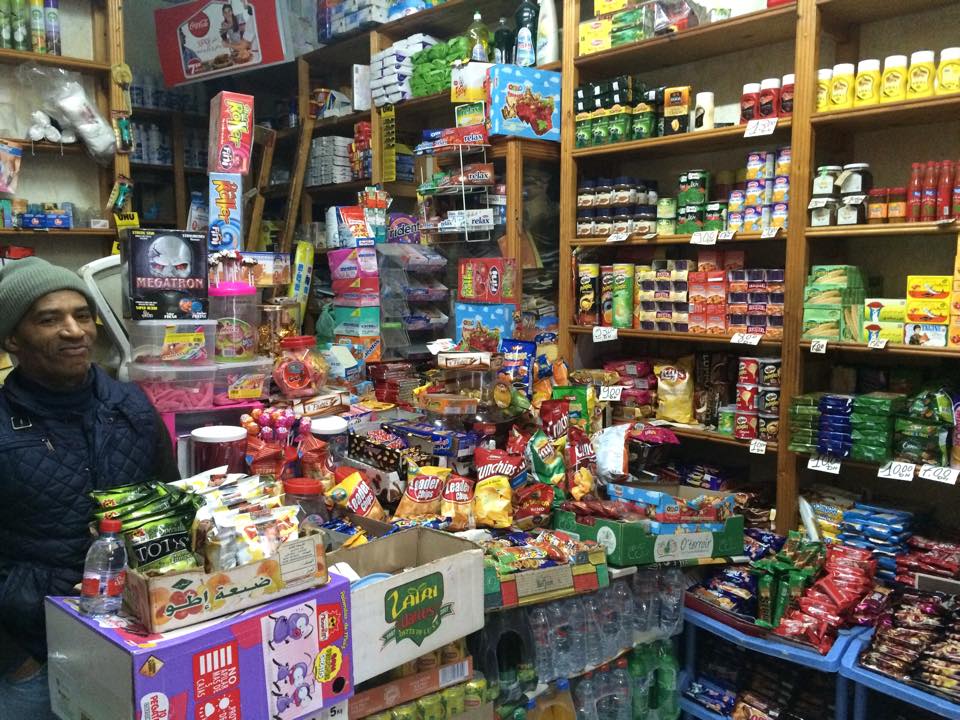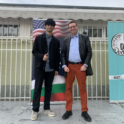StoriesBack to Stories
The Hanut Hates Me and Other Stories

By Sadie, YES Abroad 2014-2015, Morocco
It was my first full day in Morocco. The sun was bright, and I was sweating in my culturally-appropriate maxi-skirt. I had woken up early to gaze out of the window at the street below, where people walked by, on their way to work, or to buy bread for breakfast. Some were in their pajamas, some in djellabas (the Moroccan robe), others in jeans, dresses, or business suits. I felt like I was in a museum, looking at an expertly-created miniature display on modern Morocco. That day, I was to descend into the street, forfeit the bird’s-eye view, and become another figure scurrying by.
I spent my first week in a fog of AMIDEAST orientations, touristy excursions, and French classes. I was desperate to master Moroccan culture, so I searched in those first weeks for all of its visible manifestations: the hammam, couscous, djellabas. I then adopted them fiercely: “I love couscous! I go to the hammam every week! I own three djellabas!”
One such visible aspect of Moroccan culture was the hanut. Hanuts are small convenience stores that are all over Morocco, around one per block. They stock biscuits, soda, yogurts, bread, fruit, candy, cigarettes, and occasionally other essentials: oil, toilet paper, shampoo. But they look nothing like American convenience stores; their degree of organization varies from a giant pile of different goods to neatly stacked crates of goods, and it is rare to step into one without tripping over the other shoppers. They are holes in the wall, with metal doors that open up to an outdoor display and close and lock at night. Each hanut has its character and reputation; the one by my house has a good candy selection but stale bread, the one at the end of the AMIDEAST’s block has an extremely narrow entrance, and the owner sits on top of a throne of random batteries, candy bars, and cigarette packs, but he has a good selection of fruit and gummy candies.
I go to a hanut at least once a day, if not more: in the morning between classes to buy a tonik bar for a dirham (12 cents), at lunch to buy a yogurt drink or a hard-boiled egg, after school for more biscuits or a banana. The hanut I go to depends on where I am in the city, but there’s one hanut I go to far more than any other. Its location is key; it’s right next to AMIDEAST. It’s nothing special, typically there’s no fruit, the refrigerators seem to barely influence the temperature of the yogurts, and the candy bars are arranged in a crazy cascade on the counter. This hanut has the dubious distinction of being one of my first Moroccan interactions, and that’s where my story starts.
I went into this hanut on my first Monday to buy spin-off oreos, “boleros”, between AMIDEAST classes. I picked out my goods, working hard to avoid eye contact with anyone else there. Trying to send out “I know what I’m doing” vibes, I approached the counter and held out my purchases to the hanut. He greeted me, said a string of incomprehensible words in Arabic, and looked at me expectantly. “Combien?” I offered hesitantly. “Just tell me how much to pay!” I thought. He switches to French, I fumble with my money, trying to find the right bill, pay, and stumble out. I’m embarrassed. “Why didn't he just start in French?” I mutter to myself as I troop back inside AMIDEAST.
Over the next few weeks, the situation repeats itself almost every day. He says something in Arabic, I blush and ask to switch to French, he frowns and complies. I watch him with the other YES students, some of whom know a bit of Arabic, and try hard not to be jealous. With them, he seems comfortable, he smiles, he’s polite and helpful.
Three weeks in, the problem is getting serious. The hanut still starts in Arabic, I still don’t know what he’s saying. He’s the only hanut I’ve been at who speaks in Arabic first; all the others see my blond hair and immediately turn to French. I come to the desperate conclusion that this hanut must hate me. He’s cold with me, he’s annoyed and confused with my French, and at this point I’m annoyed and confused with his Arabic.
One day, something clicks in my brain. He starts in Arabic because he’s used to customers from AMIDEAST, most of whom have either studied Arabic or lived here long enough to get by in daily situations. He, out of all the hanuts, has an inkling that I’m not just a tourist, that I’m here to learn about Moroccan culture. So he expects me to know a few phrases in Arabic. He doesn't hate me, he’s holding me to a higher standard than people who see my skin and assume I’m on vacation.
My Arabic began to progress through weekly classes, and now that I understood the importance of speaking it, I worked hard to learn the basic phrases I’d need for hanuts. And suddenly, one day, I could understand what he said. Like a light bulb, he suddenly began smiling, and I felt on top of the world when I responded confidently in his language.
I still go to this hanut every day, and we exchange greetings as I hand over my bills. He asks me how I am, he wishes me a good lunch, and his face lights up. I won’t delude myself in the other direction by thinking that I’m his favorite customer, but he’s nicer to me than most of the other customers I’ve seen!
Sometimes the most visible parts of a country’s culture are windows to deeper issues, so I can’t overlook the visible parts of the culture I live in. But with the time I’ve spent here, I’ve shifted from being enamored with the surface things to learning to look behind the things I observe, and ask “why?”





